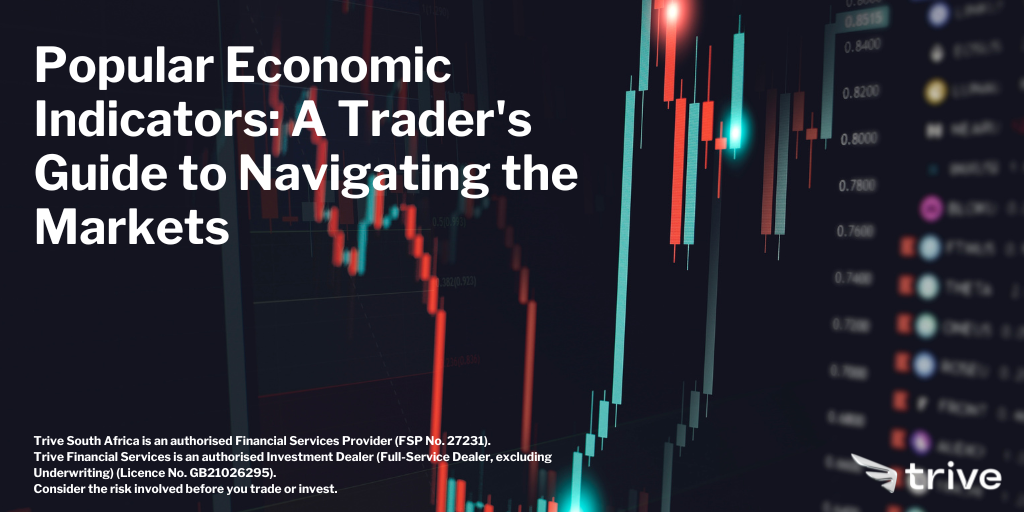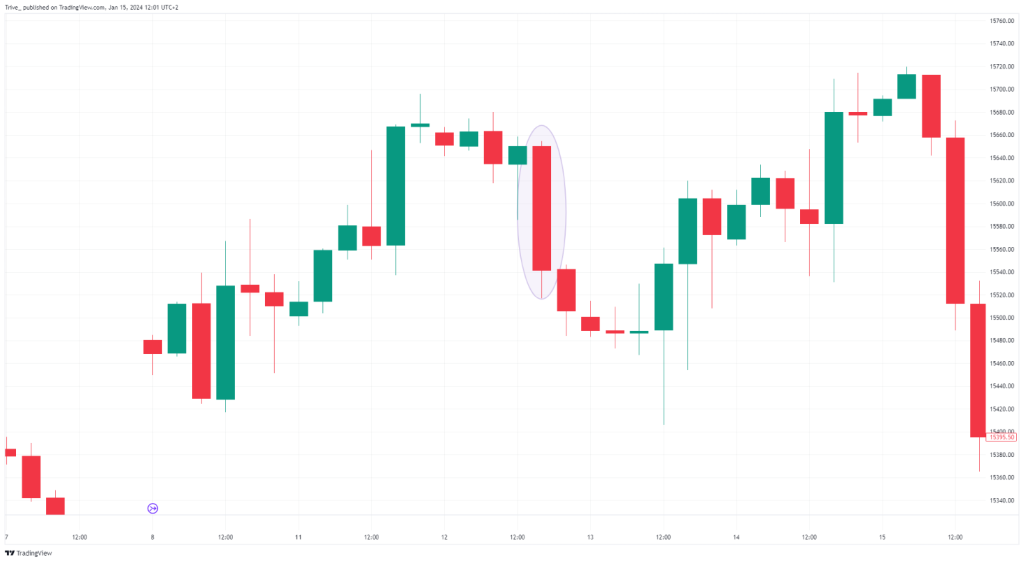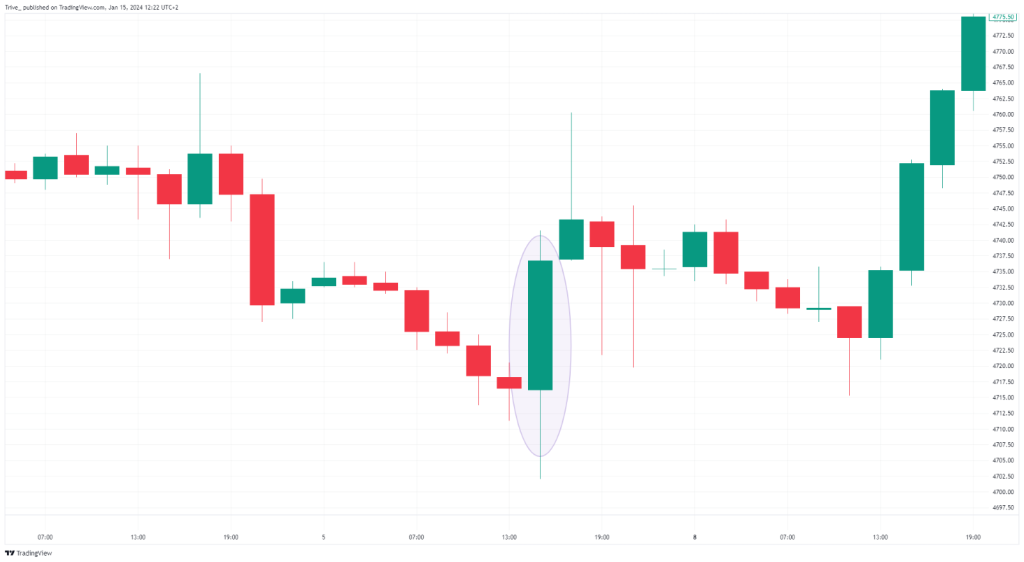
In the world of trading, markets can be intricate, shaped by various forces influencing the price dynamics of different securities. Successful traders often pinpoint specific indicators that aid them in assessing the economic landscape, a factor of considerable consequence in the trading environment and the fluctuations of financial assets.
While the array of economic indicators is extensive, a handful of widely recognized ones garner attention from market participants. These indicators serve as valuable tools, guiding traders through the unpredictable twists and turns of financial markets and enabling them to craft strategies founded on well-informed decisions aligned with these indicators’ signals about the current economic climate. Let’s delve into a few of these valuable tools.
- Interest Rates
Interest rates are a lagging indicator of economic activity, and changes in these rates are usually announced at six-week intervals. When interest rates rise, the cost of borrowing in the country’s domestic currency rises. Higher interest rates attract foreign capital investments, often resulting in domestic currency gains. In this environment, the demand for safer assets like bonds often rises, resulting in a higher allocation of capital toward these assets and away from riskier assets such as equities. In short, higher interest rates often result in a stronger currency and weaker performance in the equity market, and vice versa in a low-interest rate environment.
The graphs below demonstrate these trends, showing the performance of the US Dollar Currency Index (DXY) and the Nasdaq 100 futures (CME: NQ) when the Federal Reserve hiked the US interest rates by 75bps in June. As a result, the US Dollar gained traction at the expense of the equity market.
US Dollar Currency Index (DXY)

Nasdaq 100 Futures (NQ)

- Inflation
The driving force behind these interest rate decisions is inflation. Central banks often raise interest rates when inflation rises to maintain their inflation targets. There are many different indicators of inflation, and the most commonly watched are the consumer price index (CPI), producer price index (PPI) and the personal consumption expenditure index (PCE). During periods of rising inflation, the economy is expanding. However, a trade-off exists between an expanding economy and the potential for further interest rate increases from the central bank. Therefore, inflation needs to be viewed holistically as to what rising prices mean for the economy.
The graph below shows the Nasdaq 100 rising on the release of the inflation data in April 2021, when the CPI expanded by 2.6%, a large increase from the prior 1.7%. In this case, the increase was seen as a positive economic development, driving the equity market up as a sign of healthy consumer demand.

In contrast, the chart below shows the price action of the same futures when the US reported an uptick in inflation from 3.2% to 3.7% in September 2023. In this case, the rising inflation was not an optimistic development, as it posed a threat of further monetary tightening, which could be to the detriment of the US equity market, as the Federal Reserve was on a mission to obtain its inflation target of 2%.

- Employment Data
Employment data is posted monthly by the Department of Labour. Labour data includes the unemployment rate, which is often a good indication of the country’s economy. Low unemployment rates are often associated with a healthy economy but can also indicate higher inflation in the future, as most citizens are earning an income, which relates back to consumer spending in the economy. However, the most popular form of labour data is possibly the Non-Farm Payroll (NFP) report, which represents the number of job additions in the US excluding farm workers and those employed by the government, private households, or non-profit organizations. Labour data drives the financial markets in a similar fashion to inflation, forcing traders to consider the data from a holistic perspective.
The chart below shows the price action of the S&P 500 futures (CME: ES) following the latest NFP report, where the 216,000 job additions surpassed the consensus of 173,000. While hawkish NFP reports have generally driven the equity market down in 2023, this report triggered optimism that the US economy could maintain a soft landing following the aggressive monetary tightening over the past year. Due to the optimism that the job market is holding firm despite the challenging spending environment, the equity market advanced.

- Manufacturing and Service Reports
The service sector accounts for around two-thirds of the US economy, making manufacturing and service reports critical indicators of the economy’s trajectory. The Purchasing Manager’s Index (PMI) reports are released for the manufacturing and services sector of all major economies every month. In the US, the ISM Manufacturing and Services indexes give a further detailed breakdown into the employment, prices paid, and new orders in the respective segments, providing some indication of consumer behaviour in the economy.
Summary
Fundamental market analysis is a critical step in every trader’s journey to success. This involves deeply scrutinizing the economy’s health in determining your outlook and positioning in the current economic climate. Some of the most topical indicators traders use to anticipate the market’s general direction are interest rates, inflation, employment data, and manufacturing and service reports. While these indicators have historically moved the markets in certain ways, they are a mere indication of what can be expected. They often need to be used in conjunction with other indicators and strategies to yield the best trading results.
Sources: Investopedia, Fidelity, Reuters, Forbes, Trading Economics
Piece written by Tiaan van Aswegen, Trive Financial Market Analyst
Disclaimer: Trive South Africa (Pty) Ltd (hereinafter referred to as “Trive SA”), with registration number 2005/011130/07, is an authorised Financial Services Provider in terms of the Financial Advisory and Intermediary Services Act, 37 of 2002. Trive SA is authorised and regulated by the South African Financial Sector Conduct Authority (FSCA) and holds FSP number 27231. Trive Financial Services Ltd (hereinafter referred to as “Trive MU”) holds an Investment Dealer (Full-Service Dealer, excluding Underwriting) Licence with licence number GB21026295 pursuant to section 29 of the Securities Act 2005, Rule 4 of the Securities Rules 2007, and the Financial Services Rules 2008. Trive MU is authorized and regulated by the Mauritius Financial Services Commission (FSC) and holds Global Business Licence number GB21026295 under Section 72(6) of the Financial Services Act. Trive SA and Trive MU are collectively known and referred to as “Trive Africa”.
Market and economic conditions are subject to sudden change which may have a material impact on the outcome of financial instruments and may not be suitable for all investors. Trive Africa and its employees assume no liability for any loss or damage (direct, indirect, consequential, or inconsequential) that may be suffered. Please consider the risks involved before you trade or invest. All trades on the Trive Africa platform are subject to the legal terms and conditions to which you agree to be bound. Brand Logos are owned by the respective companies and not by Trive Africa. The use of a company’s brand logo does not represent an endorsement of Trive Africa by the company, nor an endorsement of the company by Trive Africa, nor does it necessarily imply any contractual relationship. Images are for illustrative purposes only and past performance is not necessarily an indication of future performance. No services are offered to stateless persons, persons under the age of 18 years, persons and/or residents of sanctioned countries or any other jurisdiction where the distribution of leveraged instruments is prohibited, and citizens of any state or country where it may be against the law of that country to trade with a South African and/or Mauritius based company and/or where the services are not made available by Trive Africa to hold an account with us. In any case, above all, it is your responsibility to avoid contravening any legislation in the country from where you are at the time.
CFDs and other margin products are complex instruments and come with a high risk of losing money rapidly due to leverage. You should consider whether you understand how these products work and whether you can afford to take the high risk of losing your money. Professional clients can lose more than they deposit. See our full Risk Disclosure and Terms of Business for further details. Some or all of the services and products are not offered to citizens or residents of certain jurisdictions where international sanctions or local regulatory requirements restrict or prohibit them.




